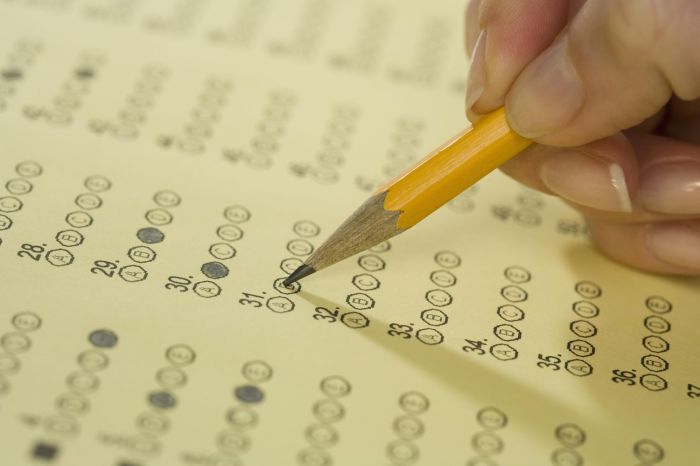
Four rules to understand what makes people tick. This exploration dives deep into the fascinating complexities of human behavior, uncovering the fundamental motivations, social dynamics, cognitive processes, and environmental influences that shape our actions and decisions. We’ll examine how these factors interact in various scenarios, drawing on illustrative examples to provide a practical understanding of human nature.
By analyzing these interconnected forces, we can gain valuable insights into the diverse tapestry of human experience. From the subtle interplay of motivations to the powerful influence of social structures, this exploration offers a comprehensive framework for understanding why people do what they do. Prepare to embark on a journey of discovery, unraveling the mysteries that lie beneath the surface of human behavior.
Understanding Motivations
Unraveling the complexities of human behavior requires a deeper understanding of the driving forces behind our actions. Motivations are the internal impulses that propel us towards specific goals and desires, shaping our interactions with the world around us. They are not static; rather, they are dynamic and can shift based on circumstances, experiences, and cultural contexts. This exploration will delve into four key human motivations, examining their nuances and how they manifest in diverse cultural landscapes.
Four Fundamental Human Motivations
Our actions are often driven by a complex interplay of motivations. Understanding these fundamental forces is crucial for interpreting human behavior in various situations. These four key motivations – security, belonging, achievement, and growth – form the bedrock of human experience and influence our choices across cultures.
- Security: The fundamental need for safety, stability, and predictability is a driving force in human behavior. This encompasses physical safety, financial security, and emotional well-being. Individuals prioritize security when facing uncertainty or perceived threats, often leading to risk-averse behavior. For instance, people might choose stable employment over higher-paying but riskier options if security is paramount.
- Belonging: The innate human desire for connection and social acceptance motivates us to form relationships and participate in communities. This motivation encompasses the need for acceptance, love, and belonging to a group. The need to feel valued and appreciated by others drives actions aimed at strengthening social bonds and establishing relationships. Examples range from joining clubs to participating in social events.
- Achievement: The drive to excel, accomplish goals, and surpass personal or societal standards is a powerful motivator. It encompasses a wide range of behaviors, from academic pursuits to career advancement. This motivation often stems from a desire for recognition, status, or mastery. People are often motivated to excel in areas where they believe they can demonstrate competence.
- Growth: The continuous pursuit of self-improvement, knowledge, and development is a fundamental human drive. It encompasses learning new skills, exploring new ideas, and challenging oneself to achieve personal growth. This motivation is often linked to a desire for mastery, understanding, and a deeper sense of self. The desire to develop personally drives people to seek new experiences and challenges.
Interplay of Motivations
Motivations rarely operate in isolation. They often interact and influence each other in complex ways. For example, the pursuit of achievement (e.g., career advancement) might be influenced by the need for security (e.g., financial stability) or the desire for belonging (e.g., professional recognition). The interplay of these motivations shapes individual choices and behaviors across different situations. Consider a student who balances the need for security (a stable financial future) with the desire for growth (learning new skills) and the need to belong (making friends in a new environment).
Cultural Variations in Motivations
Cultural contexts significantly influence the expression and prioritization of these motivations. Different cultures emphasize and value different aspects of these motivations, leading to variations in behavior and choices. For instance, some cultures may prioritize collective achievement over individual achievement, while others may emphasize personal growth above all else.
| Motivation | Individualistic Culture (e.g., USA) | Collectivist Culture (e.g., Japan) | Cultural Considerations |
|---|---|---|---|
| Security | Emphasis on personal financial security and stability | Focus on family and community well-being, often relying on extended family support | Cultural norms around risk-taking and reliance on support systems |
| Belonging | Importance of individual relationships and friendships | Emphasis on strong group ties and communal harmony | Varying social structures and expectations regarding group dynamics |
| Achievement | Recognition and rewards for individual accomplishments | Recognition and rewards for contributions to the group | Emphasis on individual vs. collective accomplishments |
| Growth | Focus on personal development and self-improvement | Focus on the development of skills and knowledge that benefit the group | Emphasis on personal vs. group progress |
The Role of Social Dynamics
Understanding motivations is crucial, but it’s incomplete without acknowledging the powerful influence of social dynamics. Our interactions with others shape our beliefs, behaviors, and even our sense of self. This influence extends beyond simple peer pressure and encompasses complex social structures that mold our individual actions and perceptions. This section explores how social interactions profoundly impact our decisions and how different social structures have distinct effects.
Social Interactions and Individual Behavior
Social interactions are fundamental to human development and behavior. We learn norms, values, and behaviors from our social environments. Observational learning, modeling, and the desire for social acceptance are all key factors. For example, a child who observes their peers engaging in cooperative play is more likely to adopt similar behaviors. Similarly, an individual who seeks acceptance within a specific group might adopt the group’s norms and values.
This process underscores the importance of social influence in shaping individual conduct.
Impact of Social Pressure on Decision-Making
Social pressure significantly impacts decision-making. Individuals often conform to group norms, even when those norms contradict their personal beliefs or values. This phenomenon, known as conformity, can stem from a desire to avoid social disapproval or a need for social belonging. Classic experiments like Asch’s conformity experiments have demonstrated the potent influence of social pressure on individual judgment.
For instance, participants in the experiment were often swayed by the incorrect judgments of their peers, even when they were confident in their own answers. This demonstrates that social pressure can lead to irrational or suboptimal decisions.
Different Social Structures and Their Effects
Social structures, such as families, communities, and organizations, exert a significant influence on human actions. These structures define roles, expectations, and norms, which, in turn, shape individual behavior. The impact of these structures can vary greatly, depending on their specific characteristics and the individual’s position within them. Family structures, for example, can foster cooperation and support or create hierarchical tensions and conflict.
Similarly, organizational structures can promote productivity and innovation or stifle creativity and individual expression.
Impact of Different Social Structures on Individual Behavior
| Social Structure | Potential Positive Impacts | Potential Negative Impacts | Examples |
|---|---|---|---|
| Family | Provides emotional support, security, and shared values. Fosters cooperation and belonging. | Can create pressure to conform to expectations, stifle individuality, or cause conflict among family members. | Strong family ties leading to mutual support in times of hardship, vs. family pressure to conform to a specific career path. |
| Community | Promotes social cohesion, trust, and shared identity. Offers resources and support networks. | Can enforce strict norms and values, leading to exclusion or discrimination of those who deviate. | Community initiatives fostering collective action to improve public spaces, vs. strict social norms limiting individual expression. |
| Organization | Provides structure, opportunities for growth, and a sense of belonging. Can foster productivity and innovation. | Can create rigid hierarchies and bureaucratic processes, stifling creativity and individual initiative. | Company culture that values employee feedback and encourages collaboration, vs. an inflexible hierarchical structure stifling employee input. |
| Cultural Groups | Provides shared traditions, values, and a sense of identity. Can foster a strong sense of belonging. | Can create exclusionary practices, discrimination against those who do not conform, or rigid adherence to norms. | Celebrating cultural diversity, promoting understanding across groups, vs. intolerance and discrimination against minorities. |
Exploring Cognitive Processes: Four Rules To Understand What Makes People Tick
Our understanding of human behavior is incomplete without considering the intricate workings of the human mind. Cognitive processes, including perception, interpretation, and the influence of biases, play a crucial role in shaping our actions and reactions. Understanding how we think, perceive, and process information allows us to predict and interpret human actions more accurately.
Thinking Patterns and Actions
Cognitive processes are the mental activities involved in acquiring, processing, and storing information. These processes shape how we interpret the world around us, influencing our decisions, judgments, and ultimately, our actions. Thinking patterns are not static; they are dynamic and responsive to various internal and external stimuli. Different thinking patterns lead to different responses to the same situation.
For example, an individual with a pessimistic thinking pattern might interpret a neutral situation as negative, leading to a different reaction compared to someone with a more optimistic outlook.
The Role of Perception and Interpretation
Perception is the process by which we select, organize, and interpret sensory information. Our perceptions are not always objective reflections of reality. Instead, they are influenced by our prior experiences, expectations, and current emotional states. Interpretation, the subsequent step, involves assigning meaning to our perceptions. The same sensory input can be interpreted differently by different individuals based on their unique experiences and perspectives.
Understanding what motivates others can be tricky, but four key rules can help. Think about their values and goals, and how those might impact their choices. For example, someone focused on health might gravitate towards foods like berries and apples for weight management, making best fruits for weight loss a valuable consideration. Ultimately, these insights help us navigate social interactions with more empathy and understanding.
For instance, a person who has experienced bullying might interpret a neutral comment as a hostile act, while someone with a positive experience might perceive the same comment as friendly. This demonstrates the profound impact of individual interpretation on behavior.
The Impact of Biases on Choices and Judgments
Cognitive biases are systematic patterns of deviation from norm or rationality in judgment. These biases are often unconscious and can significantly influence our choices and judgments. They arise from various factors, including mental shortcuts (heuristics), emotional influences, and social pressures. Recognizing these biases is crucial to making more objective and rational decisions.
Examples of Cognitive Biases
| Bias | Description | Impact on Decision-Making | Example |
|---|---|---|---|
| Confirmation Bias | The tendency to favor information that confirms existing beliefs while ignoring contradictory evidence. | Leads to the perpetuation of inaccurate beliefs and hinders objective evaluation. | A stock investor who only reads articles supporting their bullish outlook on a certain company, ignoring negative news. |
| Availability Heuristic | The tendency to overestimate the likelihood of events that are easily recalled. | Leads to inaccurate assessments of risk and probability. | A person fearing flying after a recent plane crash, even though statistically, car accidents are more frequent. |
| Anchoring Bias | The tendency to rely too heavily on the first piece of information received (the “anchor”) when making decisions. | Can lead to suboptimal choices, particularly in negotiations or pricing. | A car buyer is influenced by the sticker price when negotiating, even if it is significantly higher than the fair market value. |
| Halo Effect | The tendency to let a positive impression in one area influence judgment in other areas. | Can lead to inaccurate assessments of people or situations. | A manager who gives a promotion to an employee because they are perceived as being a good team player, without considering their technical skills or work performance. |
Environmental Influences
Understanding human behavior isn’t solely about internal motivations; external forces play a crucial role. Environmental factors, encompassing everything from economic conditions to technological advancements, shape our choices and impact the norms of society. These influences are not isolated occurrences but are intricately interwoven, creating a complex tapestry of human actions. This section delves into how external forces mold individual and collective behaviors.
Economic Conditions and Human Behavior
Economic conditions exert a powerful influence on human choices. Periods of prosperity often foster optimism and risk-taking, leading to increased investment and consumption. Conversely, economic downturns frequently result in greater caution, reduced spending, and heightened anxieties. These shifts in economic climate translate directly into changes in behavior, impacting everything from career choices to personal savings strategies. For instance, during recessions, unemployment rates rise, leading to decreased consumer spending and a potential shift in career paths as individuals seek more stable employment.
Understanding what motivates others is key, and luckily there are four simple rules to help you figure out what makes people tick. But sometimes, life throws curveballs, like mounting debt. Fortunately, there are practical steps you can take to manage your financial situation. For example, check out these 5 steps that will help you cope with your debt 5 steps that will help you cope with your debt.
Once you’ve got a handle on your finances, you can return to focusing on those four rules and understanding people better.
Likewise, economic prosperity can encourage entrepreneurship and innovation as individuals pursue new opportunities.
Historical Events and Societal Norms
Historical events profoundly shape societal norms and values. Wars, revolutions, and major social movements leave lasting imprints on cultural attitudes and behaviors. These events can lead to shifts in social structures, political systems, and ethical frameworks. For example, the Civil Rights Movement in the United States led to significant changes in societal norms regarding racial equality, influencing laws, policies, and everyday interactions.
Similarly, the aftermath of World War II saw a global emphasis on international cooperation and peace-building initiatives, impacting international relations and diplomatic practices.
Technology’s Impact on Contemporary Behaviors
Technology’s rapid advancement has fundamentally altered contemporary behaviors. From communication patterns to consumption habits, the pervasiveness of technology permeates nearly every aspect of modern life. Social media, for example, has transformed how individuals connect and share information, impacting social interactions and creating new forms of social pressure. The rise of e-commerce has redefined consumer behavior, leading to increased online shopping and a shift in retail strategies.
Furthermore, the increasing use of technology has led to the creation of new forms of entertainment and leisure activities.
Interconnected Influences
| Economic Conditions | Historical Events | Technology | Impact on Human Behavior |
|---|---|---|---|
| Economic downturns | Social movements | Social media platforms | Increased job insecurity, reduced spending, shift in career paths, formation of online communities, new ways of organizing activism |
| Economic prosperity | Wars and conflicts | E-commerce | Increased investment, risk-taking, entrepreneurship, shift in retail strategies, new consumer habits |
| Inflation | Political revolutions | AI advancements | Reduced purchasing power, impact on savings, changes in political ideologies, shift in workforce demands, automation of tasks |
| Global economic crises | Historical pandemics | Virtual reality | Mass unemployment, international trade disruptions, social isolation, rise in demand for remote work, new entertainment options |
“The interplay of economic conditions, historical events, and technological advancements creates a dynamic system that shapes human behavior in complex ways.”
Illustrative Examples

Understanding human behavior requires delving into the intricate interplay of motivations, social dynamics, cognitive processes, and environmental factors. This section provides a detailed scenario illustrating how these four rules intertwine to shape individual choices and actions.This narrative explores how these principles operate in a specific context, demonstrating how they influence the characters’ decisions and actions. It also highlights the critical role of motivation and how these rules can be applied to understand the behavior of diverse characters within a story.
Ever wondered about the four rules to understanding human behavior? It’s fascinating how much we can learn about people by studying their interactions. This often boils down to observing their communication styles. For example, exploring the nuanced aspects of what makes people tick often relates to understanding what makes someone talkative, which can be really insightful. You might even find that exploring 15 things only talkative people would understand can help you refine those four rules.
Ultimately, understanding the rules of human interaction and communication is key to deciphering the motivations behind people’s actions.
A Case Study in Conflict
The scenario unfolds in a bustling city where two rival companies, “InnovateTech” and “TechForward,” compete fiercely for market dominance. The narrative centers on a key project, the development of a revolutionary new software application. Each company faces pressure to deliver the product first and secure the lucrative contract.
The Characters and Their Motivations
Understanding the driving forces behind each character’s actions is crucial to grasping the narrative. A table outlining the characters, their roles, and motivations within the context of the scenario is presented below:
| Character | Role | Motivation | Environmental Influences |
|---|---|---|---|
| Amelia (InnovateTech) | Project Lead | Driven by ambition and a desire to prove herself; deeply committed to delivering a superior product to secure a long-term competitive advantage for her company. | High-pressure work environment; intense competition with TechForward; deadlines. |
| Benjamin (TechForward) | Project Manager | Focused on maintaining company image; concerned about meeting financial targets, motivated by profit margin. | Strict company policies; pressure to meet quarterly revenue goals; public perception of the company. |
| Carlos (InnovateTech, Junior Engineer) | Junior Engineer | Motivated by personal recognition and professional advancement. | Strong peer pressure to succeed, desire for career progression. |
| Diana (TechForward, Senior Engineer) | Senior Engineer | Motivated by a desire to produce the best possible product, with strong commitment to high-quality design. | Company culture that values high standards of engineering; career satisfaction. |
Social Dynamics at Play
The intense rivalry between InnovateTech and TechForward creates a highly competitive social dynamic. Each company employs aggressive strategies to outmaneuver the other, leading to a complex web of relationships and tensions. Rumors and back-channel communications further complicate the situation, fueling distrust and suspicion. The social pressures on individual team members influence their actions, as they seek to maintain a positive image within their respective teams.
Cognitive Processes and Decision Making
Amelia, driven by her ambition, may adopt a more aggressive approach, potentially overlooking crucial details or making impulsive decisions under pressure. Benjamin, focused on maintaining the company’s image, might prioritize efficiency over quality, leading to shortcuts in the development process. Carlos, driven by the desire for recognition, might push for unrealistic deadlines, while Diana, prioritizing quality, may face internal conflict when faced with pressure to compromise on standards.
Environmental Influences and Their Impact
The high-pressure environment of the project, coupled with tight deadlines and significant financial implications, creates a strong external influence on the characters’ decisions. The demanding nature of the project affects their cognitive processes and emotional responses.
The Role of Motivation in Action
Amelia’s motivation to excel drives her to prioritize speed and efficiency, sometimes at the expense of thoroughness. Benjamin’s focus on financial targets may lead him to prioritize profit over long-term success. Carlos’s motivation for recognition might lead him to make risky choices, while Diana’s commitment to quality might cause her to push back against unreasonable demands.
Practical Application

Unlocking the secrets behind human motivation is more than just an academic exercise; it’s a powerful tool for navigating the complexities of daily life. Understanding the rules that govern human behavior allows us to communicate more effectively, resolve conflicts constructively, and foster stronger relationships, both personally and professionally. By applying these principles, we can move beyond superficial interactions and truly connect with others on a deeper level.Applying these rules to improve communication, resolve conflicts, and enhance teamwork isn’t about manipulation.
It’s about understanding and responding thoughtfully to the motivations and needs of those around us. It’s about creating a space where everyone feels heard and understood, fostering an environment where differences are valued and challenges are tackled collaboratively.
Improving Communication
Understanding motivations, social dynamics, cognitive processes, and environmental influences allows for more nuanced communication. Instead of simply stating facts, we can tailor our communication style to resonate with the recipient’s individual needs and preferences. Active listening becomes more effective as we anticipate potential responses based on the individual’s motivations. We can anticipate and address potential misunderstandings stemming from differing interpretations or perspectives.
Resolving Conflicts
Conflicts arise from differing needs and interpretations. By understanding the underlying motivations and cognitive processes of the individuals involved, we can identify the root causes of the conflict. This allows for a more empathetic and effective approach to resolution. For instance, recognizing that someone is driven by a need for recognition might lead to a different approach than addressing someone driven by a need for control.
Enhancing Teamwork and Collaboration, Four rules to understand what makes people tick
Effective teamwork depends on understanding how individuals within a group interact and how their motivations influence their contributions. By recognizing the role of social dynamics, we can create a more collaborative environment where team members feel supported and valued. Recognizing the need for autonomy and responsibility within the group dynamic allows for optimal contribution and reduces conflicts arising from differing opinions.
Improving Interpersonal Relationships
Applying these rules to personal relationships fosters a deeper understanding and empathy for others. Recognizing that individuals have varying needs for social connection and validation enables us to tailor our interactions accordingly. For example, understanding the cognitive processes involved in decision-making can help us approach disagreements with more patience and understanding. The principles of social dynamics help to identify and resolve conflicts arising from different communication styles.
By understanding the environmental influences on behaviour, we can better address the specific needs of those around us.
Practical Strategies for Everyday Life
Applying these rules in everyday life involves cultivating a conscious awareness of our own motivations and those of others. Strategies include actively listening to understand perspectives, seeking common ground, and focusing on solutions rather than blame. Practicing empathy and recognizing different communication styles are vital components in implementing these rules. Understanding how individuals respond to different environments allows us to adapt our approach for optimal results.
Closure
In conclusion, understanding the four rules – motivations, social dynamics, cognitive processes, and environmental influences – provides a powerful lens through which to view human behavior. This framework allows us to navigate complex situations with greater empathy and insight, fostering stronger communication, resolving conflicts more effectively, and building more collaborative relationships. Armed with this knowledge, we can better understand the motivations behind our own actions and those of others, ultimately enriching our interactions and experiences.





